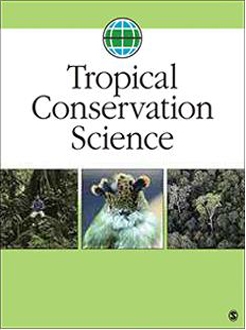On 7 February 2012, one of the largest whale sharks ever recorded was found presumably dead and towed to Karachi harbour. On 8 February, ‘whale shark’ was the third most searched keyword as shown on Google Trends. Reports on landmark events such as this could educate the public on marine conservation issues. We collated 45 internet news reports and examined whether or not reports a) are scientifically accurate for information on the species in question and b) educate readers on specific or broad biology or conservation issues. We found only 46.6% of the reports to be factually accurate. Only a minority of the reports discussed conservation of whale sharks. Scientists should step-up public communications as a meaningful educational exercise in light of overwhelming public interest in such events.
Introduction
On 7 February 2012, an 11 m long, 14.5 ton whale shark (Rhincodon typus) – one of the largest fish ever recorded - was found presumably dead in the Arabian Sea and towed to Karachi harbour. Reports were swiftly filed by the press worldwide, and many were re-posted on blogs and social media. On 8 February, ‘whale shark’ was the third most searched keyword as shown on Google Trends. Reports on landmark events such as this can help educate the public on marine conservation and the ecology of whale sharks.
Methods
We collated 45 internet news reports by entering the search term '“news + whale shark + Karachi” on Google ( www.google.com) on 12 February 2012. We targeted news reports that were available online, as these were the ones which were used as links when the news was shared on the various social media platforms. Twenty-five of these reports were obtained from national or international newspapers with print editions, twelve from internet newspapers, six from TV broadcasters, and two from news agencies (Supplementary Table 1).
We examined whether or not the reports a) are scientifically accurate for information on the species in question and b) educate readers on specific or broad biology or conservation issues. Factually accurate information on whale sharks was extracted from IUCN ( www.iucnredlist.org), and Food and Agriculture Organization ( www.fao.org). We did not examine the accuracy of claims that are non-scientific or non-verifiable, such as information about the price at which the specimen was sold, the cause of death, and the weight and length of the fish.
Results
We found that only 21 out of the 45 reports (46.6%) were factually accurate. Misinformation included statements that the whale shark is a mammal and that it is found in deep, temperate seas. Fewer than half of the reports (44.4%) included that the whale shark is the largest extant fish species.
Only a minority of the reports discussed conservation of whale sharks. Twenty-two articles (48.9%) reported that the species is threatened, but only six (13.3%) discussed causes of the species decline. Although 11 reports (24.4%) made referrals to the IUCN categorisation, only seven reports (15.6%) correctly cited the species as ‘vulnerable.’ Two reports (4.4%) correctly stated that the whale shark is CITES-listed but incorrectly concluded that its capture is therefore restricted. While 10 reports (22.2%) linked additional information, only three (6.7%) hyperlinks were relevant. Additionally, only two reports solicited comments from scientists researching whale sharks or sharks in general.
Besides demonstrating that most of the reports were compromised by misinformation and by lack of discussion on conservation issues, we tested whether reports originating from traditional media (newspapers with print editions, TV broadcasters and news agencies) are more or less likely to be factually accurate compared to new media (online news-sites). We found no statistical relationship between type of media (traditional versus new) and the likelihood of a report being factually accurate (χ2 = 0.164, Monte Carlo P = 0.74) (Fig. 1)
While anthropomorphism is not unexpected — 53.3% of reports used terms like “gentle giant” and “deep-sea monster”—11 reports mentioned that whale sharks allow humans to “hitch a ride” on their backs, a practice frowned upon by scientists and conservationists owing to its unknown impact on the animal and to ethical concerns [1,2].
Implications for Conservation
The media can play an important role in educating the public on conservation issues. However, both misinformation and omission of information may compromise its effectiveness. Scientists can take proactive roles in communicating corrections to misinformation in published articles. It would be ideal, however, if journalists were to consult scientific literature, scientifically-accurate repositories of information, or scientists to ensure accuracy prior to the publication of reports and articles. Scientists in turn, must not shun such consultations, as the media is an available tool to engage and educate the general public [3]. Unfortunately, as the race to publish (if not perish) for scientists intensifies [4], few may be willing to invest additional time to draft communications to the media and public. We encourage universities and funding agencies to consider the track record of scientists in scientific education and communication to the public in evaluation exercises.
Further, collaborative efforts between scientists and journalists can pave the way for responsible reporting. A program initiating such efforts was started in 2003 by the Association des Journalistes Scientifiques de la Presse d'Information (Association of Scientific Journalists in the Informative Press, AJSPI). Integration between the two parties is carried out through exchange programs; journalists spend one week in the laboratory with the scientists and conversely, scientists spend one week in the press room with the journalists [5]. Efforts such these are beneficial to both parties and can foster greater appreciation and understanding of their respective career requirements.
Judging from overwhelming public interest on organisms such as the whale shark, and the growing awareness of anthropogenic global change, the time is ripe for scientists to increase public communications for conservation.
Acknowledgements
We wish to thank the two anonymous reviewers for their comments that helped improve this manuscript.






